Panasonic Lumix GH5 II vs GH5: the differences may be bigger than you think!
The new Panasonic GH5 Mark II looks a lot like the old GH5, but a great deal has changed that's not immediately obvious
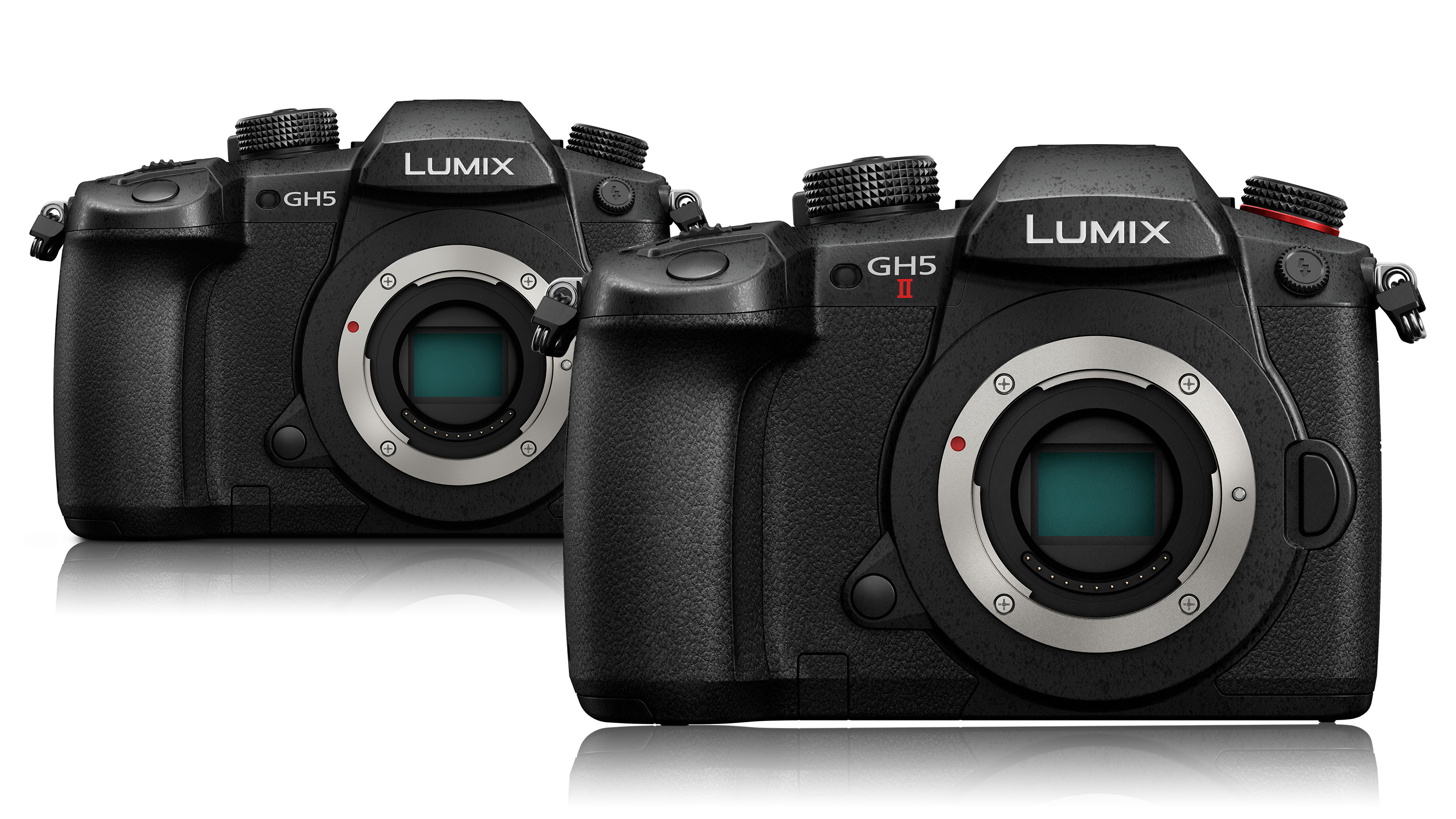
Ever since its launch in 2017, the Lumix GH5 has been a highly-regarded hybrid stills and 4K video camera, with 4K specs that were ahead of its time and still stack up pretty well today. So what can the new GH5 II do to improve on that winning formula?
There are no spectacular gains with the Lumix GH5 II – that’s where we hope the GH6 will deliver – but there are a lot of important upgrades that might easily get overlooked but cumulatively add up to quite an upgrade.
Panasonic Lumix GH5 II vs GH5: key differences
Why you can trust Digital Camera World
If you already own a GH5 you probably wouldn’t upgrade to the GH5 II (or perhaps if you own a Panasonic Lumix G9), but if you’re in the market for an affordable and highly effective hybrid stills camera that has a manageable size and a manageable price, Panasonic may just have found the sweet spot – again – with the Lumix GH5 II.
It's not the only upgrade option of course – you can also swap to full frame. See our Panasonic Lumix GH5 II vs S5 comparison to see the pros and cons.
For now, though, here are the key differences between the new GH5 II and the original GH5:
Sensor
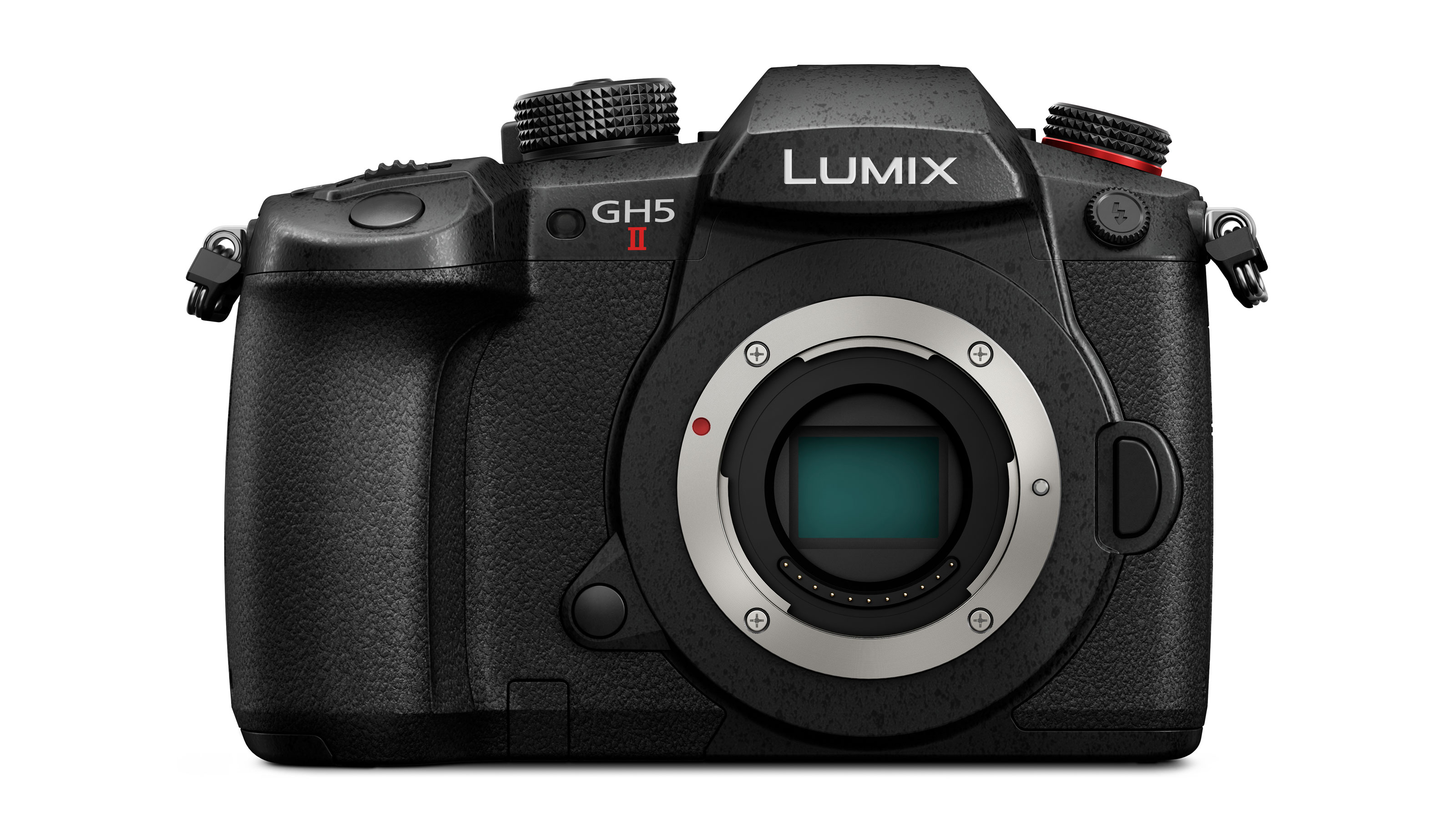
• GH5 II: 20.3-megapixel Live MOS Sensor, 17.3 x 13.0mm, AR, latest high-speed, high-performance Venus Engine
• GH5: 20.3-megapixel Live MOS Sensor, 17.3 x 13.0mm, Venus Engine 10
Some may be disappointed that the GH5 II has the same sensor as its predecessor, but there have been some changes. The 20.3MP Live MOS sensor now has an AR (Anti-Reflective) coating, and Panasonic has upgraded the Venus 10 engine in the GH5 to offer increased speed and performance, which has a knock-on effect on the video modes available and the continuous shooting performance.
ISO range
• GH5 II: ISO 200-25600, ISO 100 exp
• GH5: ISO 200-25600, ISO 100 exp
There is no change here. The original Lumix GH5 offers a sensitivity range of ISO 200-25,600, expandable down to ISO 100. Neither camera offers dual native ISO.
Stabilization
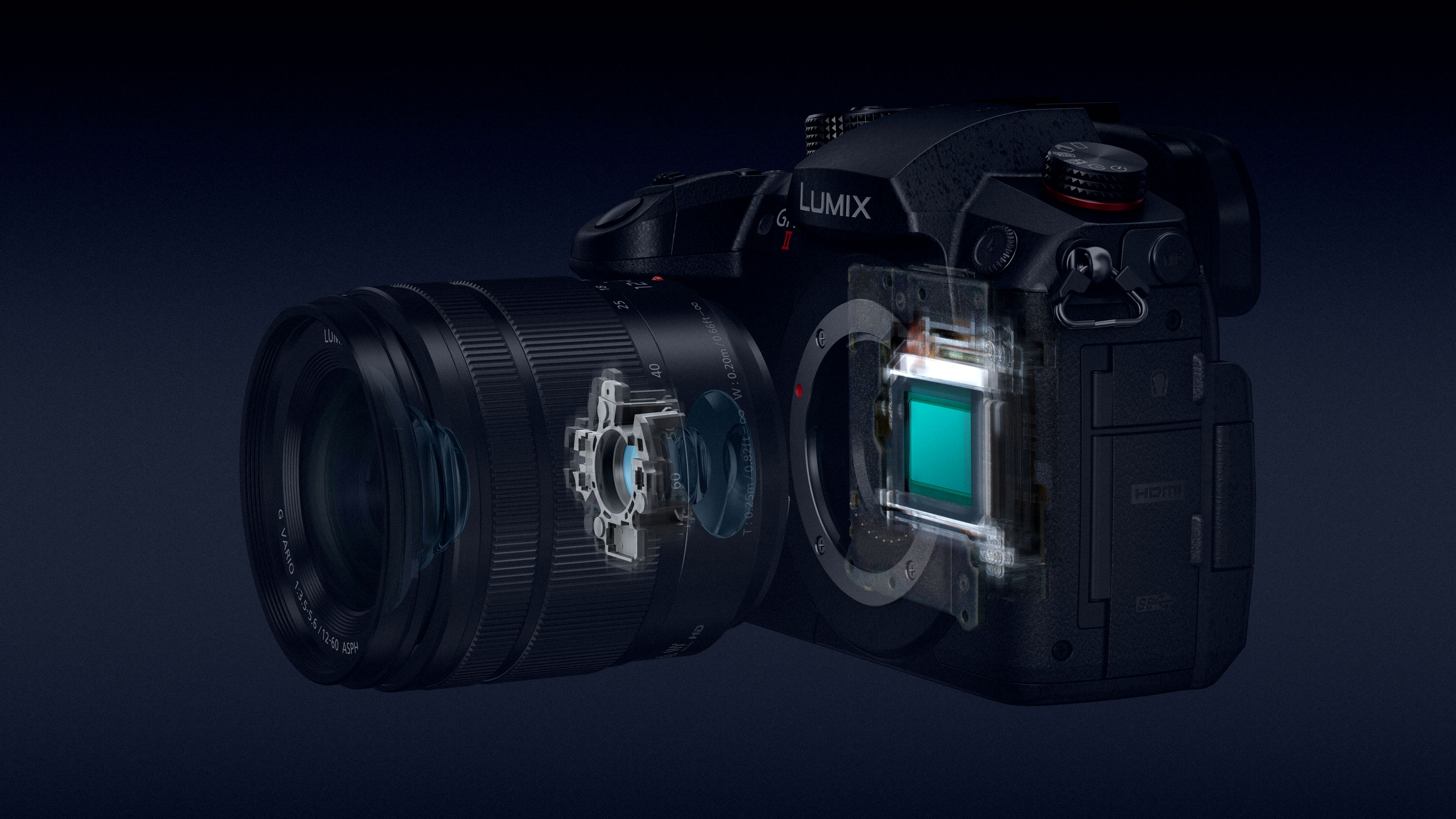
• GH5 II: 5-axis 6.5 stop IBIS, latest Lumix S1H movement algorithm
• GH5: 5-axis 5-stop IBIS
The Lumix GH5 II brings two improvements here. One is an increase in shake compensation from 5 stops in the GH5 right up to 6.5 stops. The second is the adoption of the latest algorithms in the Lumix S1H to provide smooth and stable filming while the camera is in motion.
Autofocus
• GH5 II: 225-area DFD contrast AF
• GH5: 225-area DFD contrast AF
There are few changes to report here. Panasonic has stuck with its 225-area DFD contrast based autofocus for the Lumix GH5 II, with a 480fps readout speed to offer AF speed as fast as 0.05sec. Panasonic has yet to adopt on-sensor phase detect AF in any of its mirrorless cameras. Both cameras offer continuous AF at up to 9fps in continuous shooting. The GH5 II does add Head/Body/Animal AF to the Face/Eye detection offered with the GH5.
Continuous shooting
• GH5 II: 12fps AFS/MF, 9fps AFC, RAW/RAW+JPEG 108+ images, JPEG 999+ images
• GH5: 12fps AFS/MF, 9fps AFC, RAW/RAW+JPEG 60+ images, JPEG 600+ images
Again, the original GH5 and the new GH5 II are closely matched. Both can shoot continuously at 12fps with single shot AF or manual focus, and up to 9fps with continuous autofocus. But the buffer capacities are different – we assume this is connected to the faster processor in the GH5 II. The GH5’s buffer capacity is already pretty good, at 60+ raw files or 600+ JPEGs, but the new GH II leaps ahead with 108+ raw files or 999+ JPEGs. That’s pretty formidable for a camera not specifically designed for sports or action.
Video
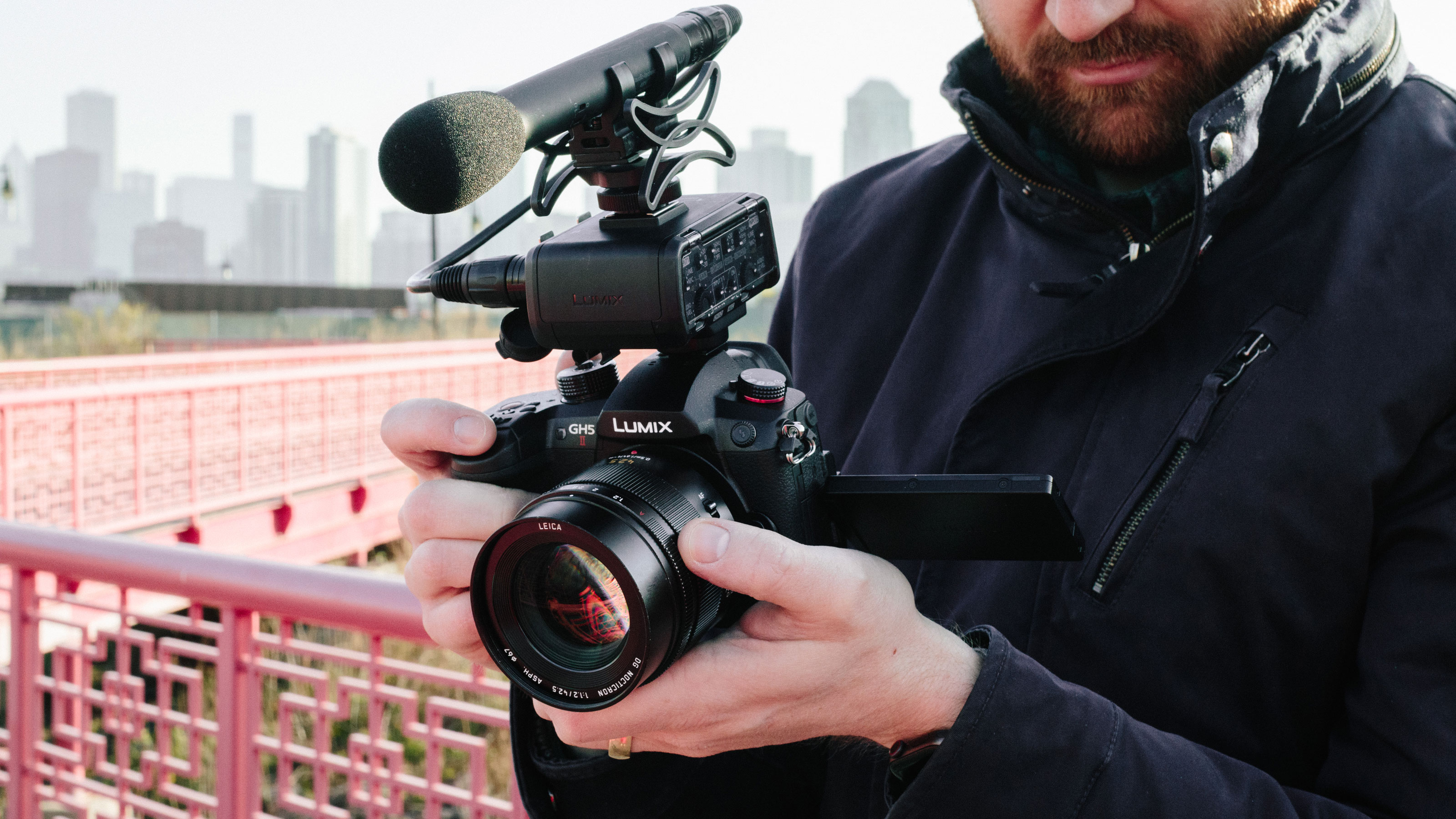
• GH5 II: 4K 60p recording, MOV or MP4*
• GH5: 4K 60p recording, MOV or MP4
* The GH5 II does not push back those headline 4K 60p video specifications, but it does significantly extend the performance envelope for bit depths, frame rates and formats within that. This is the longest section because this is where the GH5 II’s improvements become quite complex.
First, the GH5 II now supports C4K 4:2:2 10-bit at up to 30p, where the GH5 stopped at 24p. It can also shoot C4K 4:2:0 10-bit at 60p, an option not available on the GH5. With the GH5 II you can now capture 4:2:0 10-bit 4K at up to 60p (only up to 30p on the GH5), and VFR (variable frame rate) modes from 2-60p have been added for C4K and Anamorphic modes. Speaking of Anamorphic, the GH5 II can capture Anamorphic 4K 4:2:0 10-bit at 50p (not available on the GH5).
• See Best anamorphic lenses
The permutations of frame rates, bit depths and formats are practically endless, so it takes quite a bit of drilling down to find where the GH5 II improves on the GH5. Other improvements, though, are easier to identify.
One is that as well as offering C4K/4K 4:2:2 10-bit up to 60p via HDMI to an external recorder, the GH5 II can simultaneously capture 4:2:0 10-bit video internally, which could be a real workflow benefit if you need shareable footage quickly.
The GH5 II also offers Panasonic’s V-Log L log mode pre-installed, which was a paid upgrade for the GH5, and also comes with two updated Cinelike D2 and Cinelike V2 gamma presets (V1 in the GH5), plus two new L.Monochrome S and L.Classic Neo color profiles.
It doesn’t stop there. Panasonic says a future firmware update will bring RTP/RTSP wired IP streaming, a Live View Composite feature, USB tethering to 4G/5G smartphone with Compatible Streaming Distribution, and a more stable smartphone connection.
Streaming
• GH5 II: Wireless live streaming in FHD/60p via LUMIX Sync or direct connection to a Wi-Fi router
• GH5: Tethered streaming via LUMIX Tether software for PCs
Where the advances in video specs for the GH5 II are rather detailed and granular, it does bring a big upgrade for streaming fans – and this is a very rapidly growing area for broadcasters and content creators. Where the GH5 could be connected to a PC for streaming the Panasonic’s LUMIX Tether software, the GH5 II brings brand new wireless live streaming in full HD at up to 60p, via the LUMIX Sync smartphone app – or by connecting it directly to a Wi-Fi router. A future firmware update will add RTP/RTSP wired IP streaming.
LCD
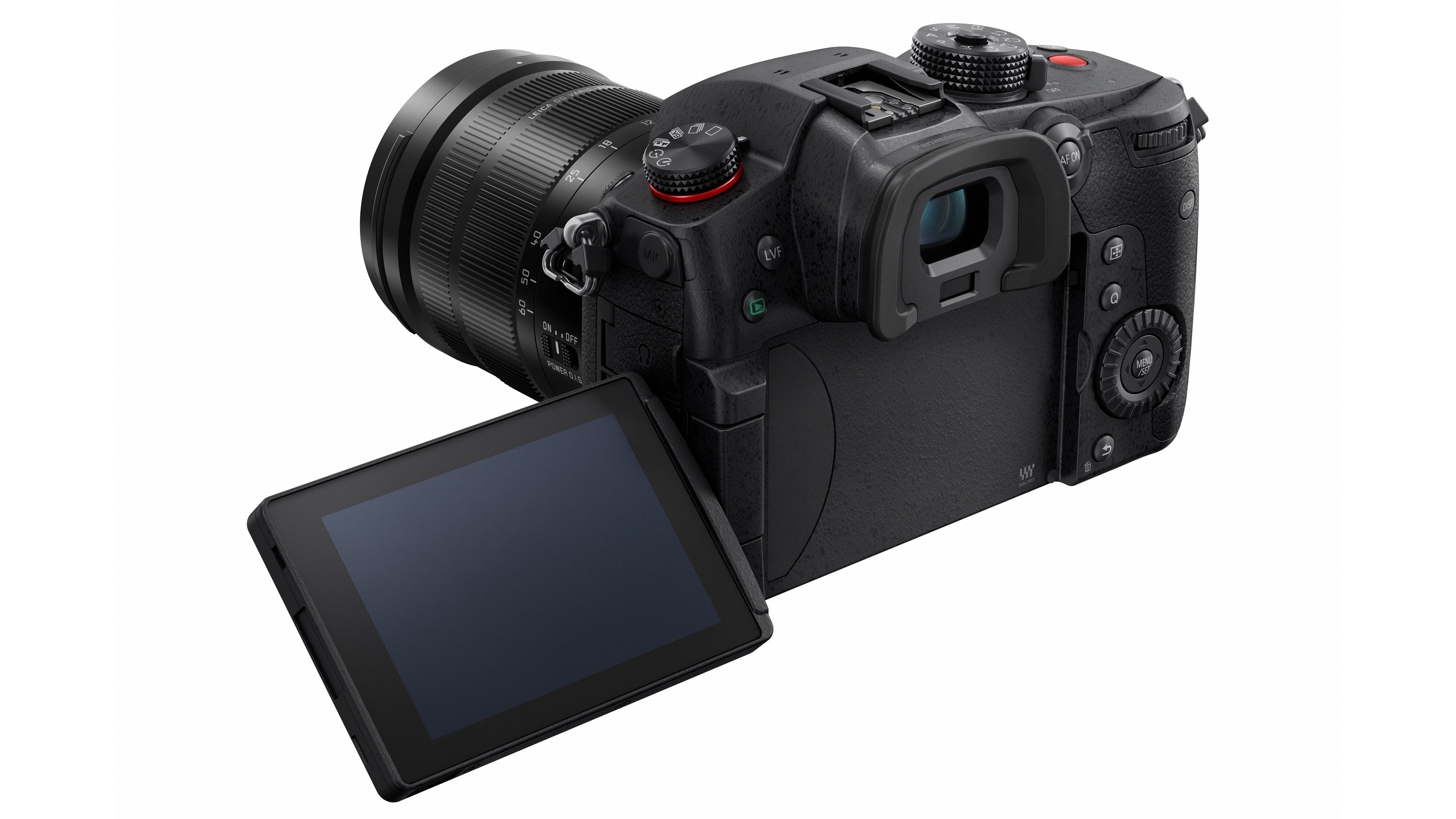
• GH5 II: 3.0-inch free-angle touchscreen,1840K
• GH5: 3.2-inch free-angle touchscreen, 1620K dots
Interestingly (or even disappointingly), Panasonic has swapped the rear screen from the 3.2-inch display on the GH5 to a smaller 3-inch screen on the GH5 II, though it does have a higher resolution and Panasonic says its luminosity and color rendition are improved for outdoor daylight use.
EVF
• GH5 II: OLED, 3.68m dots, 0.76x magnification
• GH5: OLED, 3.68m dots, 0.76x magnification
While the rear LCD has changed on the Lumix GH5 II, the EVF (electronic viewfinder) is the same as the GH5’s, with 0.76x magnification and 3.68 million dots. By today’s standards that’s certainly decent, but not exceptional.
Construction
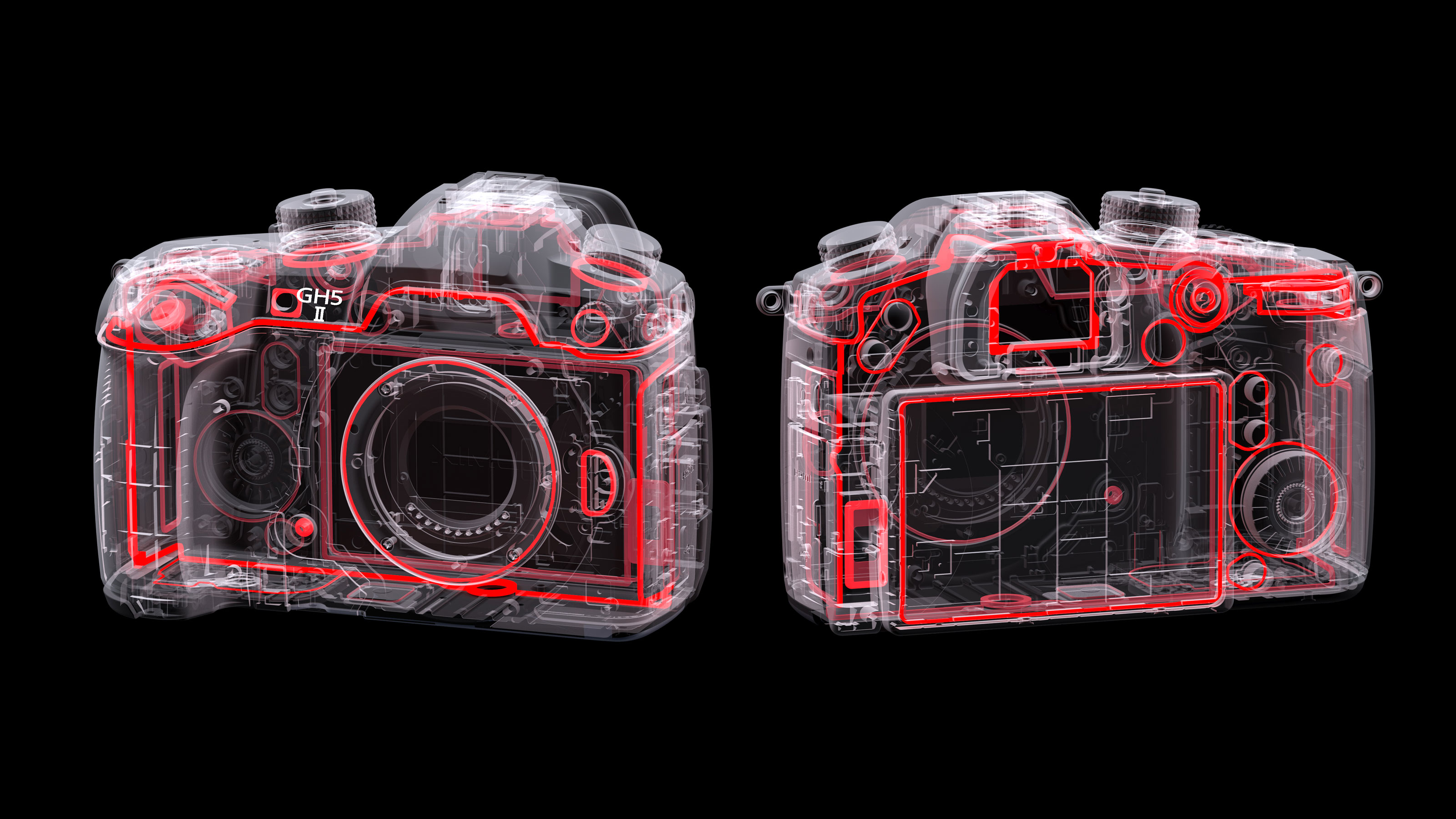
• GH5 II: Die-cast alloy front/rear frame, splash, dust and freeze resistant, 200,000 cycle shutter
• GH5: Die-cast alloy front/rear frame, splash, dust and freeze resistant, 200,000 cycle shutter
The EVF isn’t the only thing that’s the same on both cameras. Indeed, apart from the rear screen, the GH5 II and GH5 are essentially physically identical. Both have a die-cast magnesium alloy construction, weatherproofing and a 200,000 shot shutter life.
Battery
• GH5 II: 2200mAh battery, USB PD, LCD 410 shots, EVF 410 shots, 1200 shots in Power Save LVF mode, 120min 4K video capture
• GH5: 1860mAh, LCD 410 shots, EVF 400 shots, 1000 shots in Power Save mode
The Lumix GH5 II does come with a new, higher-capacity 2200mAh battery, though this does not seem to make a huge difference to shooting times. Instead, its main advantage is probably its USB PD compatibility and its ability to be charged with an AC charger or USB.
Memory
• GH5 II: 2x SD slots UHS II U3 (V90)
• GH5: 2x SD slots UHS-II U3 (V60)
Both cameras offer twin SD/SDHC/SDXC memory card slots, both of which are UHS II and U3 compatible. Panasonic quotes a V60 speed rating for the GH5 and V90 for the GH5 II. It’s not clear whether the GH5 II’s card slots are any faster or whether this reflects the memory card speeds available at the GH5’s launch.
Dimensions
• GH5 II: 138.5 x 98.1 x 87.4 mm, 727g, body only with battery and memory card
• GH5: 138.5 x 98.1 x 87.4 mm, 725g body only with battery and memory card
Clearly, a lot has gone on inside, with the GH5 II’s faster processor, live streaming, pre-installed V-Log L, enhanced frame rate/bit depth combinations and more, but on the outside it’s almost identical to the existing GH5. All that’s changed is the weight, and that’s only by 2g.
Price
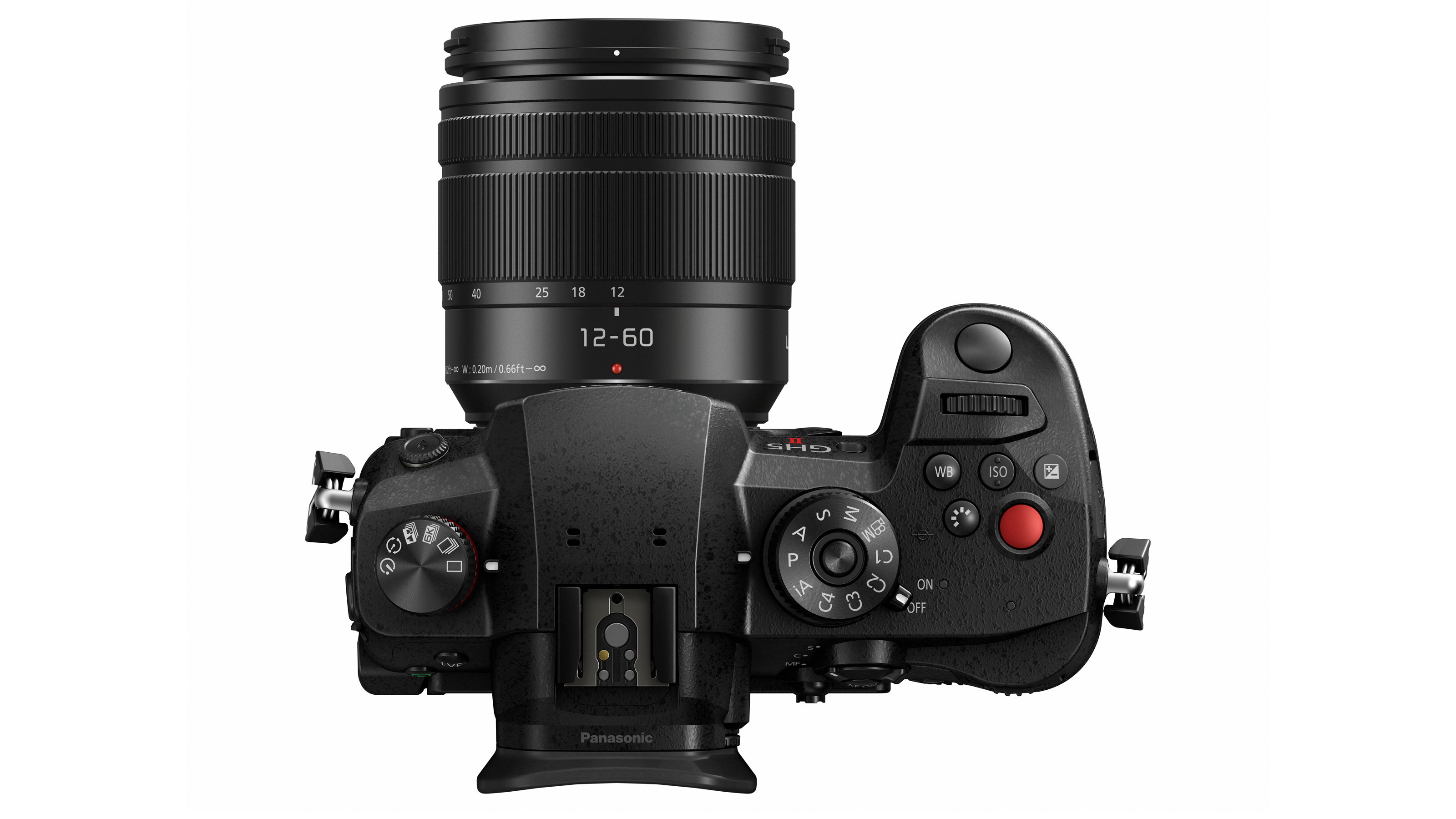
• GH5 II: Available from the end of June for $1,698/£1,499 body only, £1,699 with the 12-60 LUMIX lens (UK) and $2,298/£1,999 with the LEICA 12-60mm lens.
• GH5: Currently $1,345/£1,199 body only, £1,349 with 12-60 LUMIX lens (UK), $1,940/£1,599 with LEICA 12-60mm lens
The original GH5 was a pretty pricey camera when it first came out as a premium hybrid camera right at the top of the Lumix range. Prices have come down since then, partly because the camera has been out for a while now and partly – we assume – to make room for the GH5 II. The price for the new model does look very competitive, even against the original price for the GH5. Which one you choose will depend on how much extra you want t to pay for the GH5 II’s worthwhile but very specific video enhancements and its wireless streaming potential.
• Pre-order the Panasonic Lumix GH5 II from B&H
• Pre-order the Panasonic Lumix GH5 II from Adorama
• Pre-order the Panasonic Lumix GH5 II from Park Cameras
Read more:
• Best camera for video: a general guide
---
• Best 4K cameras for video
• Best vlogging cameras
• Best cinema cameras
• Best mirrorless cameras
• Best Panasonic cameras
How we test cameras
We test mirrorless and DSLR cameras both in real-world shooting scenarios and in carefully controlled lab conditions. Our lab tests measure resolution, dynamic range and signal to noise ratio. Resolution is measured using ISO resolution charts, dynamic range is measured using DxO Analyzer test equipment and DxO Analyzer is also used for noise analysis across the camera's ISO range. We use these real-world testing and lab results to inform our comments in buying guides. For compact cameras and phones, we judge on real world handling and photographic results alone.
Get the Digital Camera World Newsletter
The best camera deals, reviews, product advice, and unmissable photography news, direct to your inbox!

Rod is an independent photography journalist and editor, and a long-standing Digital Camera World contributor, having previously worked as DCW's Group Reviews editor. Before that he has been technique editor on N-Photo, Head of Testing for the photography division and Camera Channel editor on TechRadar, as well as contributing to many other publications. He has been writing about photography technique, photo editing and digital cameras since they first appeared, and before that began his career writing about film photography. He has used and reviewed practically every interchangeable lens camera launched in the past 20 years, from entry-level DSLRs to medium format cameras, together with lenses, tripods, gimbals, light meters, camera bags and more. Rod has his own camera gear blog at fotovolo.com but also writes about photo-editing applications and techniques at lifeafterphotoshop.com
